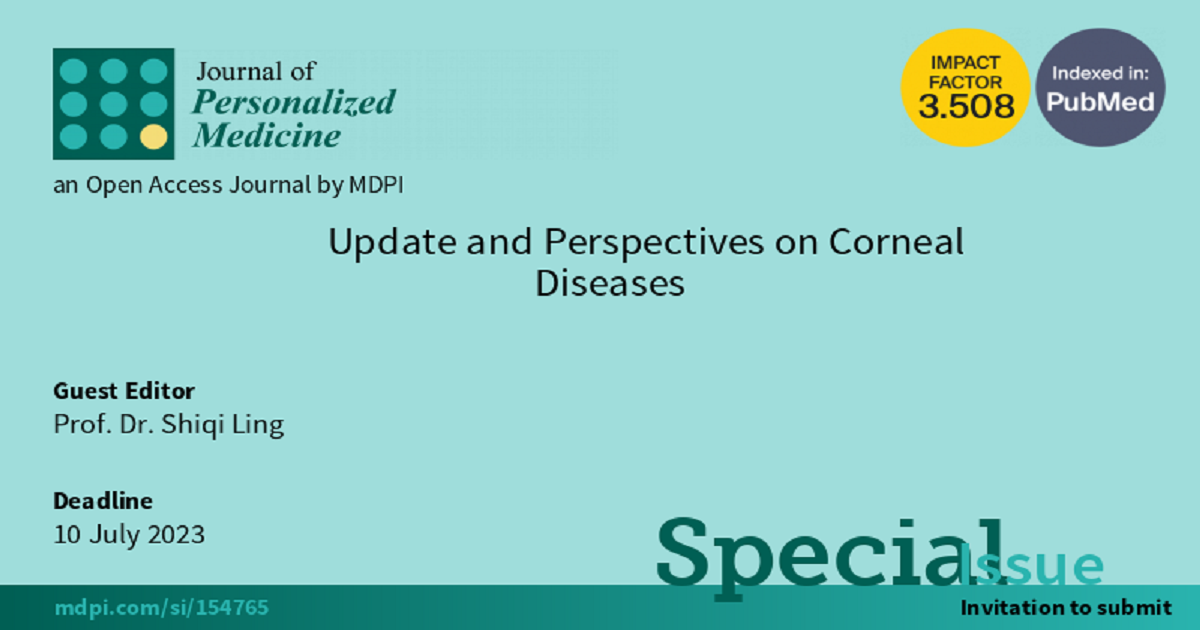- 6.0CiteScore
- 25 daysTime to First Decision
Update and Perspectives on Corneal Diseases
This special issue belongs to the section “Mechanisms of Diseases“.
Special Issue Information
Dear Colleagues,
The cornea is not only the outmost layer of the eyeball, but it also transmits the light essential for vision, giving focus to images. Recent medical and technological innovations have improved cornea diagnosis and contributed to the variety of treatments available.
This Special Issue of the Journal of Personalized Medicine aims to explore updates and perspectives on all kinds of ocular surface diseases, such as keratitis, corneal neovascularization/lymphangiogenesis, dry eye, pterygium, ocular surface related surgery, etc. We are pleased to invite you to contribute studies that use basic science, clinical, and population-based approaches, including, but not limited to, mechanism research, diagnosis, and therapy. Original research articles and reviews are welcome.
Prof. Dr. Shiqi Ling
Guest Editor
Manuscript Submission Information
Manuscripts should be submitted online at www.mdpi.com by registering and logging in to this website. Once you are registered, click here to go to the submission form. Manuscripts can be submitted until the deadline. All submissions that pass pre-check are peer-reviewed. Accepted papers will be published continuously in the journal (as soon as accepted) and will be listed together on the special issue website. Research articles, review articles as well as short communications are invited. For planned papers, a title and short abstract (about 250 words) can be sent to the Editorial Office for assessment.
Submitted manuscripts should not have been published previously, nor be under consideration for publication elsewhere (except conference proceedings papers). All manuscripts are thoroughly refereed through a single-blind peer-review process. A guide for authors and other relevant information for submission of manuscripts is available on the Instructions for Authors page. Journal of Personalized Medicine is an international peer-reviewed open access monthly journal published by MDPI.
Please visit the Instructions for Authors page before submitting a manuscript. The Article Processing Charge (APC) for publication in this open access journal is 2600 CHF (Swiss Francs). Submitted papers should be well formatted and use good English. Authors may use MDPI's English editing service prior to publication or during author revisions.
Keywords
- corneal diseases
- dry eye
- corneal transplantation
- ocular-surface-related surgery

Benefits of Publishing in a Special Issue
- Ease of navigation: Grouping papers by topic helps scholars navigate broad scope journals more efficiently.
- Greater discoverability: Special Issues support the reach and impact of scientific research. Articles in Special Issues are more discoverable and cited more frequently.
- Expansion of research network: Special Issues facilitate connections among authors, fostering scientific collaborations.
- External promotion: Articles in Special Issues are often promoted through the journal's social media, increasing their visibility.
- e-Book format: Special Issues with more than 10 articles can be published as dedicated e-books, ensuring wide and rapid dissemination.

